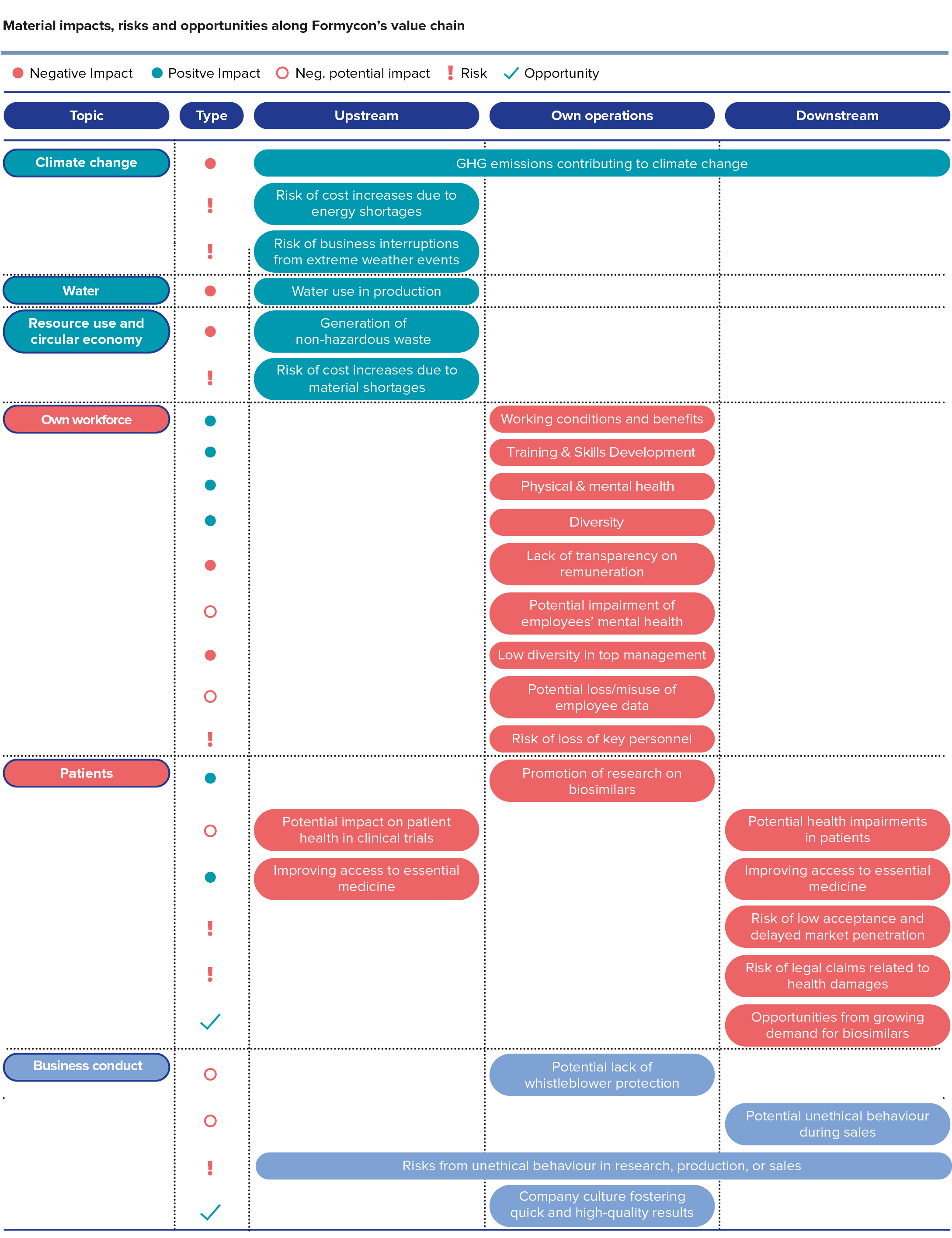Strategy and areas of action
Environment. Social. Governance.
The sustainable orientation of our business processes contributes to reducing our ecological footprint, promoting social justice within the company and along the value chain and ensuring responsible corporate governance. In this sense, we see sustainability as an integral part of our self-image as a highly specialized biosimilar developer.
Governance
- Corporate culture
- Compliance and business integrity
- Corruption and bribery
- Protection of whistleblowers
Strategy and areas of action
To better integrate sustainability into our business activities, we developed our first sustainability strategy in 2023 – a conscious commitment to society and the environment. The focus on sustainability within our business processes helps reduce our ecological footprint, promotes social justice within the company and along the value chain, and ensures a responsible corporate governance. In this sense, we see sustainability as an integral part of all our business activities as a highly specialized biosimilar developer.
Within our sustainability strategy, we have identified areas of action that are of high importance to our business and our entire value chain. Our sustainability strategy addresses the three areas of Environmental, Social and Governance topics (ESG) and is aligned with the European Corporate Sustainability Reporting Directive (CSRD)1. We have defined specific measures in all fields of action to achieve the goals we have set. Thus, the sustainability strategy addresses our material issues and provides a framework for our actions in the coming years.
We are committed to transparency and continuous improvement in all areas of our sustainability efforts. The annual updating of our materiality analysis and the review of our goals and measures will help us to continuously improve our sustainability performance while ensuring our long-term economic success.
1 CSRD
The CSRD reporting form on sustainability aspects is based on twelve binding standards, the set of European Sustainability Reporting Standards (ESRS). The aim of the CSRD is for companies to publish comparable, detailed and reliable sustainability information.
Materiality Analysis
We use the materiality analysis to evaluate sustainability aspects from two perspectives. Firstly, we analyze the impact of our business activities on the environment and society, which is referred to as the impact perspective. Secondly, from a financial perspective, we assess which sustainability issues have or could have a material impact on our financial position and our company’s success. To gain a better understanding of our impacts, risks and opportunities we involve relevant stakeholders in the discussions, such as employees, internal expert, suppliers, business partners and industry experts. An issue is considered material if it has either an actual or potential positive or negative impact of our business activities on the environment and people, or if it creates risks or opportunities for our company’s success. The results of the materiality analysis are fed into our internal risk management system, thus integrating ESG risk analysis into the company risk management.
We update the materiality analysis every two years and currently, we have identified a total of fifteen impacts within the areas of environment, own workforce, end consumers and governance.



